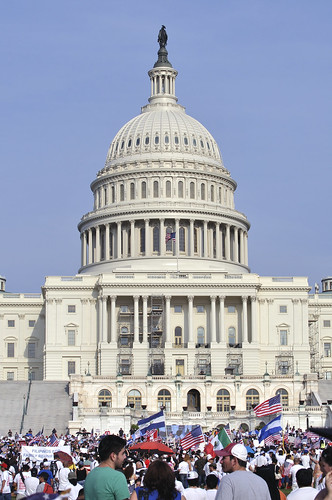
Much has been written about the EB-5 program, its successes and challenges and much has been reviewed and analyzed regarding the EB-5 program regulations, guidance, and stakeholder meetings. The heart of the program is the legislation that authorizes and structures it. Congress created the program in 1990 as part of the Immigration Act of 1990 (P. L. 101-649). The legislative goal of the program was to help stimulate the U.S. economy by giving foreign entrepreneurs who invest in a U.S. business the opportunity to permanently live and work in the U.S. It was also seen as good public policy to encourage investment and job creation in the U.S., and as an alternative to other investment programs similar to Canada and Australia. In 1993, Congress decided to further develop and augment the program by creating the Immigrant Investor Pilot Program, also called the Regional Center program. P.L. 102-395. This Pilot program has been extended many times, the most recent of which was in 2012 through September 2015. Public Law No. 112-176. This latest extension was passed without dissent by the U.S. Senate and by a vote of 412-3 in the House of Representatives. The bi-partisan support of the program shows the incredible policy support for this type of immigration policy.

After the temporary extension of the Regional Center Pilot Program in September 2012 through September 2015, Congress is poised to make significant changes to the EB-5 program through a major comprehensive immigration reform effort. President Obama has made immigration reform one of the most important domestic policy issues of his second term. Leaders in both the House and the Senate are working on bills with the goal of effectuating Comprehensive Immigration Reform this year.
On April 17, 2013, the Senate group referred to as the “Gang of 8” introduced a Comprehensive Immigration Reform bill. Eight Senators introduced the Border Security, Economic Opportunity, and Immigration Modernization Act of 2013 which includes pivotal changes to the EB-5 program. The business and immigration advocate community applauded the efforts of Senators Rubio, Flake, McCain, Graham, Schumer, Menendez, Bennet and Durbin, for the proposed changes that will benefit this important program which is a catalyst for job creation, foreign direct investment to the U.S., as well as a means of attracting leading international entrepreneurs and business people to the county.
The key EB-5 relevant provisions include:
- A permanent authorization of the Regional Center program.
- Recapture of unused immigrant visa numbers.
- Elimination of per country quotas for employment based visa categories including the EB-5 category. This would have a positive impact on the EB-5 category as a whole which is expected to reach the quota for China in 2014.
- Exemption of dependent spouse and children from current EB-5 visa quota of 10,000. This would mean that all 10,000 visa numbers would be allocated to investors only.
- An increase in the number of visa issued to EB-5 visa applicants.
Currently, the Senate Judiciary Committee is in the process of marking-up S. 744. This process will take several weeks. Amendments to be considered concerning legal immigration are beginning on the second day of mark-up and at some point; one such amendment change which will be watched closely is Senator Leahy’s (D-VT) Amendment Number 2
This amendment was offered by the Senate Judiciary Committee Chair who is a major proponent of the EB-5 program. The amendment would make several key changes to the EB-5 program. As noted above, the base bill already proposes making the Regional Center program permanent. This amendment, if passed will codify current guidance, provide for expedited processing or applications, but also makes significant changes to investment amounts and introduce penalties for non-compliance with reporting requirements. In particular, the legislation provides for:
- Streamlined Processing of Petitions
- Pre-approval of business plans for Regional Center investments opportunities that will be binding in the adjudication of petitions at the individual investor stage
- Expedited processing for pre-approved business plans on investor petitions in order to cut down the current long wait times and
- Introduction of a consultation process on Regional Center designation with the Secretary of Commerce
Some concerning items include:
- Expansion of current Regional Center reporting requirements
- Introduction of monetary penalties for violations of the “Financial Statements and Other Reporting” requirements. As drafted, these penalties could be charge if there is a determination made by USCIS that the regional center does something that is “inconsistent with its designation.” The amendment also permits USCIS to use non-compliance as grounds for termination of the Regional Center’s designation
- Introduction of civil fines could include up to five percent of the total alien capital invested in a particular project as well as a suspension of the Regional Center’s designation for a period of time, in cases of repeated violations the Regional center could be permanently barred from participation in the Regional Center program
- Background checks on Regional Center principals. The amendment would preclude anyone with a criminal or civil violation that involves:
- Fraud or deceit;
- A securities violation or
- Certain aggravated felonies from participating in the Regional Center program.
- Introduces unreviewable discretion to terminate a Regional Center by the Secretary of the Department of Homeland Security and
- Introduction of compliance provisions by Regional Centers to ensure that all federal and state securities laws are complied with
The amendment also seeks to raise the investment amount from $1 million or $500,000 (if the investment is located in a rural area of a TEA), to an amount to be determined by the Secretary of Commerce. If the Secretary of Commerce chooses not increase the threshold investment amount, the bill provides for an automatic change in the amount of investment based on the Consumer Price Index once every five years.
The House is also working on its own version of a comprehensive immigration reform bill. A gang of Eight Representatives—four Republican and four Democrat are working to craft legislation that will most probably include similar provisions to the base Senate bill. There are also separate immigration bills that are being worked on and will or have been introduced from members of the Judiciary Committee.






